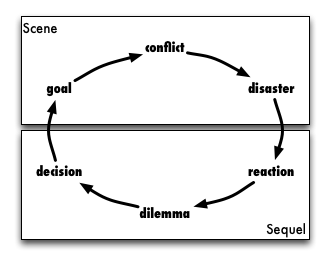See this page instead if you’re looking for help with completing your HTML file.
E-lit is intentional fiction created to use the unique features of a digital space.
- The first wave of e-lit writing mostly used the current possibilities of the internet: HTML-based webpages
- Later e-lit uses everything: Flash animation, 3D virtual spaces like Second Life, code work (e.g. poetry that uses some of the terminology and structure of programming languages), interactive fiction, games, and rogue uses of platform that weren’t intended for fiction (Facebook, Twitter, YouTube, GoogleMaps… basically anything that can be used to tell a story)
- With so many types of e-lit, it’s hard to talk about features all e-lit shares, but there are a few commonalities: multi-linear (many paths of reading), interactivity and choice instead of passive reading, multimedia (use of more than one form of media: video, text, music, navigable 3D space…), and exploitation of our expectations for a digital space (e.g. we assume a link will bring us to another page–what if it does something else? If a writer’s trying to make the reader share a protagonist’s frustration, perhaps they seed they story with links that don’t actually go anywhere no matter how often you click them)
- As well as e-lit has explored these possibilities, don’t forget that a lot of them are usable in print form, too (though they’re used far less often). Think of Choose Your Own Adventure books (multi-linear!). Robert Coover has a short story called “Heart Suit” that’s printed on large playing cards; there’s a set first and last card, but you shuffle the rest of the cards and place them between in any order before reading.
Some questions to ask yourself:
- What e-lit have you encountered already? (e.g. Twitter/Facebook accounts for someone’s cat)
- Is there anything you saw in your reading of e-lit that you might use for your own work, either for a class project or outside class?
- Did you have trouble navigating any of the works? Did you want to make maps or other devices to help you find everything or get back to where you were before?
- Did any works seem broken or not work with your device? Did the works seem dated in other ways?
- How do you feel about e-lit as a way to tell stories, in comparison to more traditional forms like a novel?
Three questions for evaluating e-lit:
- What is the work trying to do, both in the story it’s trying to tell and how it’s trying to make the reader think and feel?
- What are the significant and/or noticeable features of the e-lit’s digital design? (Does it use GoogleMaps, video, link to jarring images…?)
- How successfully does #2 match up with #1? That is, how does the digital design of the work support its narrative?
Another way to describe the homework assignment:
Imagine the narrative you created last week as a piece of electronic literature–what might stay the same about the narrative, and what might change? For example, might you use hyperlinks to tell different characters’ viewpoints? Would music help the reader identify more with a given character? After spending some time imagining the e-lit you’d create if given the tools and know-how, make a list of specific things you’d do to your narrative to use the full power of the digital at its service. Go beyond basic statements like “links” and “video” to explain how these features might expand your narrative. Consider:
- erasure. What happens if you strike out, obscure, or replace certain parts of your narrative text? What happens if it’s hard to read against the text’s background?
- visual design (changes to the typography, layout, animation, legibility, division of text onto multiple pages…)
- linking in multiple ways:
- to continue one line of thinking or plot
- to provide alternate paths of plot
- to illustrate (graphics, sound, etc.; not only in a purely one-to-one illustrative fashion, but also in evocative or interpretive ways. Marble Springs’ author Deena Larsen notes that “connections do not have to be tangible to be real.”)
- to provide context (flashbacks, definitions, intertextuality)
- media (videos, music, still images; created by you or referenced by the text)
- interactivity (how might you let the reader interact with your story?)
Homework assignment example:
1. Caitlin’s short story (“Literally a Hat”) describes an ace amateur detective checking out a crime scene. Two possibilities for an e-lit version:
- Follow you process of thinking and secretly gives you points depending on how early you figure it out (figures of suspects at side, you highlight ones you’re still suspicious of)
- Add items to your inventory, can’t go forward if you don’t pick up the right clues or know how to juxtapose them (Indiana Jones: statue + mayo)
Your e-lit version doesn’t need to be game-like, though–and in fact, many of your stories might not be suited to a game as well as to other tactics. Using an inventory to pick up objects works great with a story that rewards noticing and clue gathering, but an inventory might not make any sense for a story that doesn’t contain crime or mystery. You can always use things Deena Larsen suggests on her site, or imagine something entirely different–the story just needs to use (or abuse!) the digital platform.
2. Justin’s “Mirror Mirror” story made me think about doubling (mirrors, obviously), so one e-lit intervention might be to have every reference to a mirror in the story be hyperlinked to a page that looks like it’s the same story… except it’s slightly different and slightly odd (a through-the-looking-glass effect).
Looking forward to seeing what you dream up!



